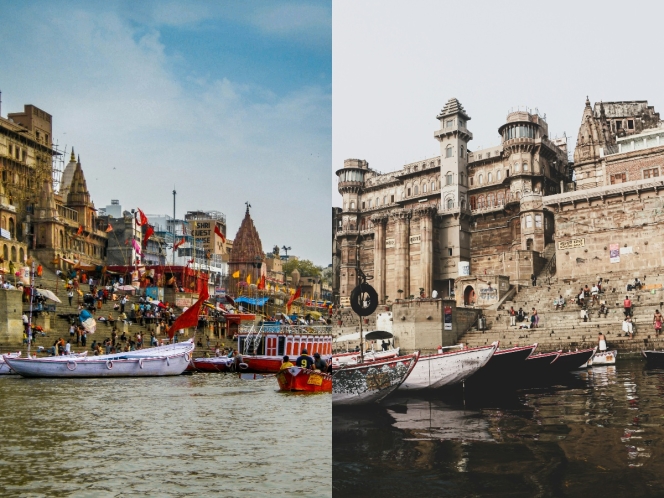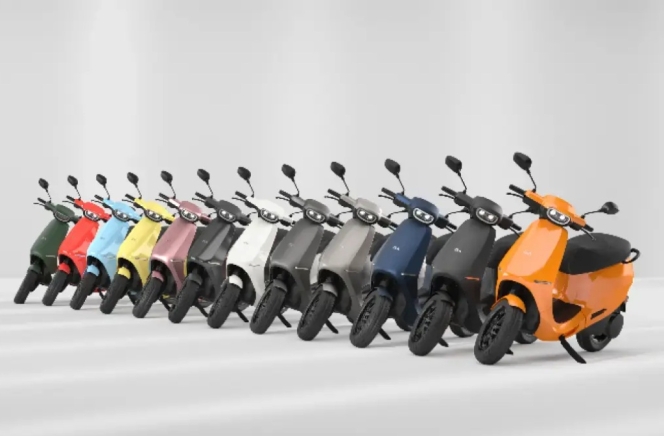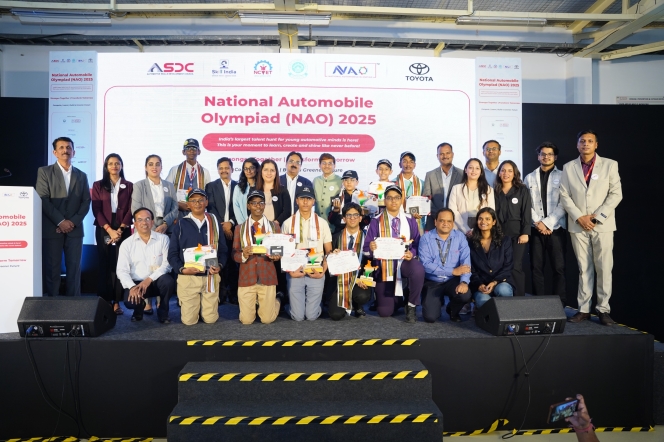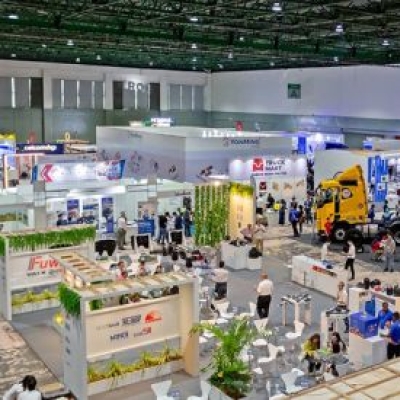- Toyota Mobility Foundation
- TMF
- Arcadis
- CITYDATA
- VOGIC AI
- Prameya Consulting
- The Urbanizer
- Akshat Verma
- Pras Ganesh
- Avinash Dubedi
- Vikram Gulati
Five Finalists Selected for Toyota Mobility Challenge in Varanasi
- By MT Bureau
- August 08, 2025

The Toyota Mobility Foundation (TMF) has named five finalists for its USD 3 million Sustainable Cities Challenge. The challenge focuses on improving crowd management in the historic city of Varanasi, also known as Kashi.
The competition was developed in collaboration with the City of Varanasi, Challenge Works and the World Resources Institute. It aims to find solutions that will ease congestion and improve pedestrian flow in the city's narrow lanes, which see millions of visitors annually.
The five finalists were chosen from ten semi-finalists who had six months to develop their concepts. The selected teams will each receive USD 130,000 in funding to pilot their solutions in Varanasi.
The finalists are:
- Arcadis: Their solution, SANKALP, is an interconnected system of technologies designed for proactive crowd management. It uses real-time data, simulations and communications platforms to ensure people move safely.
- CITYDATA, Inc.: The company's CityFlow solution is a cloud-based platform that uses big data and AI to measure, analyse and manage crowds without needing new hardware.
- VOGIC AI: Behtar-Way is a community-based navigation platform that uses AI to guide people through alternative routes and provide real-time crowd intelligence to city officials.
- Prameya Consulting: Their Nayichaal solution is a 'phygital' AI ecosystem that combines a chatbot, a navigation app and digital signage to improve mobility and safety.
- The Urbanizer: Jan Jatra is a people-focused mobility solution that blends local knowledge with colour-coded wayfinding and digital signs to help with navigation.
Akshat Verma, Municipal Commissioner of Varanasi, stated, "These five outstanding finalists are not only developing solutions that enhance safety, accessibility and the lived experience for both residents and pilgrims, but also ensuring they safeguard the cultural and spiritual fabric of Kashi for future generations."
Pras Ganesh, Executive Program Director at the Toyota Mobility Foundation, added, "From a field of global innovators, these finalists stood out for their creative, practical and contextual approaches to one of the world’s most complex mobility environments."
Avinash Dubedi, Head of Sustainable Cities and Transport at WRII, noted, "Their solutions go beyond easing congestion, they reimagine how people of all ages and abilities—residents, pilgrims and those with special needs, can move through the city with dignity, safety and ease."
Kathy Nothstine, Director of Cities and Societies at Challenge Works, said, "The finalist teams reflect the best of collaborative, interdisciplinary innovation and their work will help transform how we think about movement, space and sacredness in dense urban areas."
Vikram Gulati, Country Head of Toyota Kirloskar Motor, commented, "Their innovations have the potential to transform historic cities and set new global standards in crowd management and urban mobility."
Ola Electric Receives INR 3.66 Billion In PLI-Auto Incentive For FY2025
- By MT Bureau
- December 25, 2025

Bengaluru-based electric vehicle maker Ola Electric has received a sanction order from the Ministry of Heavy Industries for incentives totalling INR 3.66 billion. The payment is granted under the Production Linked Incentive (PLI) Scheme for Automobile and Auto Components for FY2024-25.
The incentive relates to the Determined Sales Value for the period and will be disbursed through IFCI, the financial institution appointed by the government for the scheme.
The PLI-Auto Scheme is an initiative by the Government of India designed to increase domestic manufacturing and the adoption of advanced automotive technologies. Ola Electric’s eligibility for the claim is based on its vertical integration and localisation of electric vehicle (EV) components.
“The sanction of INR 3.66 billion under the PLI-Auto Scheme is a strong endorsement of Ola Electric’s manufacturing capabilities and our commitment to building world-class EV technology in India. This incentive recognises our sustained efforts in scaling domestic production, deepening localisation, and driving innovation across the electric mobility value chain. We remain committed to supporting the Government of India’s vision of making India a global hub for advanced automotive manufacturing and clean mobility,” said the company in a statement.
bp To Sell 65% Stake In Castrol To Stonepeak For $10.1 Billion
- By MT Bureau
- December 25, 2025

UK-based energy major bp has reached an agreement to sell its 65 percent shareholding in Castrol to investment firm Stonepeak at an enterprise value of USD 10.1 billion. The deal follows a strategic review of the lubricants business and is expected to result in net proceeds for bp of approximately USD 6 billion.
The transaction includes USD 0.8 billion as a pre-payment of future dividend income on bp’s retained 35 percent stake. The valuation represents an enterprise value to EBITDA ratio of approximately 8.6x. Following the sale, a new joint venture will be formed with Stonepeak holding the majority interest and bp retaining 35 percent.
The sale is a component of bp's USD 20 billion divestment programme. To date, the company has announced or completed divestments totalling USD 11 billion.
Proceeds from the Castrol transaction will be used to reduce bp’s net debt, which stood at USD 26.1 billion at the end of the third quarter of 2025. The company aims to reach a net debt target of USD 14–18 billion by the end of 2027. bp has a two-year lock-up period on its remaining 35 percent stake, after which it has the option to sell.
Carol Howle, interim CEO, bp, said, “Today’s announcement is a very good outcome for all stakeholders. We concluded a thorough strategic review of Castrol, that generated extensive interest and resulted in the sale of a majority interest to Stonepeak. The transaction allows us to realise value for our shareholders, generating significant proceeds while continuing to benefit from Castrol’s strong growth momentum. And with this, we have now completed or announced over half of our targeted USD 20bn divestment programme, with proceeds to significantly strengthen bp’s balance sheet. The sale marks an important milestone in the ongoing delivery of our reset strategy. We are reducing complexity, focusing the downstream on our leading integrated businesses, and accelerating delivery of our plan. And we are doing so with increasing intensity – with a continued focus on growing cash flow and returns and delivering value for our shareholders.”
Anthony Borreca, Senior Managing Director, Stonepeak, said, “Lubricants are a mission-critical product, which are essential to the safe and efficient functioning of virtually every vehicle, machine, and industrial process in the world. Castrol’s 126-year heritage has created a leading market position, an iconic brand, and a portfolio of differentiated products that deliver meaningful value to its customers. We are excited to work alongside Castrol’s talented employees, coupled with bp’s continued guidance as a minority interest holder, as we support the business’s continued growth.”
The transaction is expected to complete by the end of 2026, subject to regulatory approvals. bp stated that the move allows the company to simplify its portfolio and focus its downstream operations on integrated businesses.
- Automotive Skills Development Council
- ASDC
- Central Board of Secondary Education
- CBSE
- Toyota Kirloskar Motor
- National Automobile Olympiad
- Dr Biswajeet Saha
- Vinkesh Gulati
- G Shankara
ASDC, Toyota Kirloskar Motor, CBSE Host National Automobile Olympiad 2025
- By MT Bureau
- December 24, 2025

The Automotive Skills Development Council (ASDC), in collaboration with the Central Board of Secondary Education (CBSE) and Toyota Kirloskar Motor (TKM), concluded the National Automobile Olympiad (NAO) 2025. The event took place from 17–19 December at Toyota’s manufacturing facility in Bidadi.
The initiative, aligned with the Skill India Mission, is designed to introduce school students to careers in the automotive and mobility sectors. The Olympiad saw participation from 175 students in Classes VI to XII. These participants were selected from an initial pool of over 136,000 students from schools across India and the UAE.
The three-day event included:
- Industry Masterclasses: Sessions led by experts on automotive fundamentals and emerging technologies.
- Technical Challenges: Competitions covering robotics, welding precision and technical problem-solving.
- Future Mobility Modules: Exposure to hybrid vehicles, data science and AR/VR tools.
- Industry Immersion: Visits to the Toyota manufacturing plant, the Toyota Technical Training Institute (TTTI) and test-track experiences.
The Olympiad concluded with the announcement of winners across three categories:
|
Category |
1st Place |
2nd Place |
3rd Place |
|
Grades 6–8 |
Abeer Verma (Bhopal) |
Aaradhy Pradhan (Ghaziabad) |
Dakhsh Kumawat (Indore) |
|
Grades 9–10 |
Anchit Sahai (Maharashtra) |
Arjun Annamalai (Chennai) |
Mahatva Jain (Jaipur) |
|
Grades 11–12 |
Nishanth Sudhakar (Chennai) |
Vidhan Herpalani (Dubai) |
Punith Kumar (Bengaluru) |
Dr Biswajeet Saha, Director, Training & Skill Education, CBSE, said, “We are delighted to see Toyota Kirloskar Motor hosting National Automobile Olympiad, which perfectly aligns with CBSE’s vision of experiential and skill-based learning. Events like this provide students with invaluable exposure to real-world automotive excellence and industry best practices. They also bridge the gap between classroom learning and practical application, inspiring young minds.”
Vinkesh Gulati, Chairperson, ASDC, said, “National Automobile Olympiad is a powerful platform to spark curiosity and channel young talent toward the automotive sector. ASDC is committed to building a future-ready workforce, and collaborations such as this with Toyota Kirloskar Motor provide students early exposure to real-world industry practices. The enthusiasm and technical aptitude displayed by participants reaffirm our belief in India’s next generation of mobility professionals.”
G Shankara, Executive Vice-President, Toyota Kirloskar Motor, stated, “We are proud to collaborate with ASDC in nurturing young minds through NAO 2025. By offering experiential learning and access to world-class skilling infrastructure, we aim to inspire students to innovate and contribute meaningfully to the future of mobility while supporting the Skill India vision.”
The programme concludes a cycle of assessments and training intended to bridge the gap between academic learning and industrial application in the automotive sector.
- SIAM
- Society of Indian Automobile Manufacturers
- National Road Accident Reduction Challenge 2026
- Safe Journey
- Prashant K Banerjee
- Devashish Handa
- Suzuki Motorcycle India
SIAM Launches National Road Accident Reduction Challenge 2026 For Students
- By MT Bureau
- December 23, 2025

The Society of Indian Automobile Manufacturers (SIAM) has launched the National Road Accident Reduction Challenge 2026 under its ‘Safe Journey’ initiative. The competition invites undergraduate students across India to develop solutions aimed at improving road safety and reducing fatalities.
The challenge targets undergraduate students in teams of two to four. Participants are required to submit field-tested or ready-to-implement ideas across several themes:
- User-centric interventions
- Technology-driven safety
- Infrastructure improvement
- Evaluation and enforcement
Submissions must include a 15–20 slide concept deck backed by data validation, fieldwork, or prototypes. The deadline for nominations is 15 January 2026, with final projects due by 1 March 2026.
Shortlisted teams will present their projects to a jury consisting of representatives from SIAM, vehicle manufacturers (OEMs), transport authorities and NGOs. The winning team will be awarded a cash prize of INR 250,000 at the SIAM SAFE Annual Convention 2026.
Prashant K Banerjee, Executive Director, SIAM, said, “In India, around 485 people lose their life daily due to road accidents. India’s young minds have the power to drive real change on our roads. The National Road Accident Reduction Challenge 2026 is designed to channel their creativity, problem-solving skills, and sense of responsibility into practical interventions that can be implemented on the ground. By engaging students as partners in road safety, SIAM aims to foster a culture of accountability, innovation, and safer mobility for the nation.”
Devashish Handa, Executive Officer, Suzuki Motorcycle India (SMIPL), said, “Road safety is a key focus area of Suzuki Motorcycle India’s CSR efforts. We believe that student-led innovation can contribute meaningfully to safer mobility in India. Through SIAM’s National Road Accident Reduction Challenge 2026, we aim to strengthen road safety ethics among the young generation and encourage practical, on-ground interventions to help bring down road fatalities.”






Comments (0)
ADD COMMENT